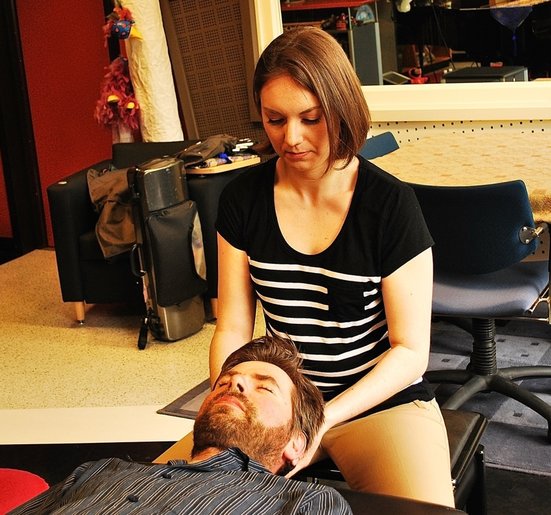Jillian is a Guild Certified Practitioner of Functional Integration (FI)TM
Functional IntegrationTM
The art of communicating ease through touch and movement

Learning through feeling
Functional Integration (FI) is a non-verbal dialogue between two nervous systems communicating through touch and movement. Touch and movement could be described as the first language of the nervous system. Sensory information gleaned from exploratory movement guides us from our earliest moments of life as we learn about ourselves and our relationship to the surrounding environment. This sensory input is at the core of learning for every movement ability we have, whether it is one of the simplest, vital movements of life, such as rolling over, or the complex coordination required to play a musical instrument, paint a picture, or summit a mountain peak. The sensations evoked through exploration of movement and touch also construct our self-image and sense of personal agency--who do I feel that I am? What do I feel that I am capable of? How can act on and be impacted by the world around me?
Functional Integration (FI) is a non-verbal dialogue between two nervous systems communicating through touch and movement. Touch and movement could be described as the first language of the nervous system. Sensory information gleaned from exploratory movement guides us from our earliest moments of life as we learn about ourselves and our relationship to the surrounding environment. This sensory input is at the core of learning for every movement ability we have, whether it is one of the simplest, vital movements of life, such as rolling over, or the complex coordination required to play a musical instrument, paint a picture, or summit a mountain peak. The sensations evoked through exploration of movement and touch also construct our self-image and sense of personal agency--who do I feel that I am? What do I feel that I am capable of? How can act on and be impacted by the world around me?
|
What to expect from an FI lesson
At the beginning of an FI lesson the Feldenkrais PractitionerTM observes their student to sense, feel, and see patterns of movement, coordination, and muscular tension that characterize their unique habits of self-use. The student relaxes in a lying or seated position and allows the practitioner to passively move their body smoothly and gently. The practitioner moves only in ways that feel comfortable and familiar to the student, joining them in a fluid exploration of existing movement possibilities. As the lesson progresses, the practitioner progresses through specific movement sequences that invite the nervous system to experience new possibilities for coordination that are functionally beneficial, comfortable, and potentially new to the student. Practitioners use touch purposefully as a tool to bring attention to specific coordination relationships between various parts of the body. The practitioner revisits specific body parts or movement sequences recursively throughout the lesson to allow their student to experience changes in sensation as the lesson progresses. What will I feel? There is no forcing or stretching in FI and your muscles will not be massaged. At no time should you feel pain or strain, and the practitioner will move only in ways that feel comfortable to you. Over the course of the lesson you may feel your body soften and relax. Movements will become easier as your nervous systems integrates the sensory information provided by the practitioner. Over time you may find that your movement becomes freer and lighter and that you are able to move in ways that seemed difficult or impossible before. Your sensory acuity will improve and you will enjoy greater awareness of your body that frees you to find new, more comfortable ways to move to do whatever activities matter most to you and experience the joy of moving with ease. |
Hear what these journalists from Buzzfeed had to say after receiving their first Functional Integration lessons!
|
|
Potential benefits of Functional Integration include:
|
Who can benefit from Functional Integration?
|
